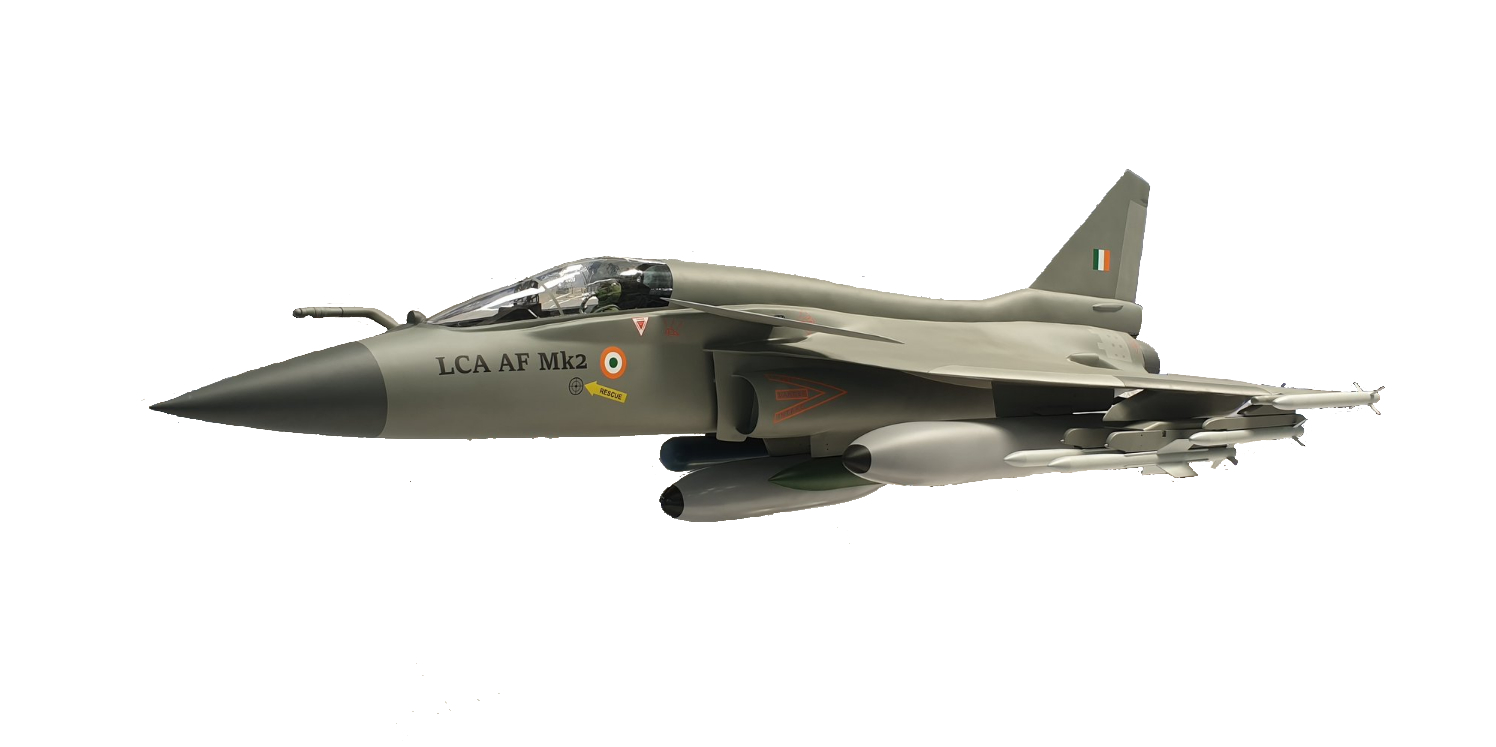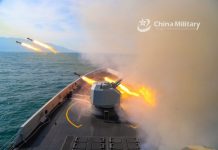Just days after India’s Hindustan Aeronautics Limited (HAL) was granted authorization to begin production of the LCA Mk 2 fighter jet, new reports indicate that several countries have expressed interest in the Indian light combat aircraft.
About 16 countries have approached India to seek details of the next-generation Tejas Mk2 fighter aircraft, News 18 reported citing unnamed government officials. The model of the aircraft was displayed at the Defense Expo 2022.
The report added that the government was also working on identifying other private agencies to increase the combat aircraft production rate amid heightened demand. Last month, the Cabinet Committee on Security (CCS), which is led by the Prime Minister and the Defense Minister, gave its nod to the LCA Mk2 combat aircraft.
“There is a huge push from the central government on increasing the production rate of the aircraft with India already getting inquiries about the aircraft from 16 countries,” LCA Mk2 Project Director at Aeronautical Development Agency (ADA) Dr. V Madhusudana Rao told News18 on the sidelines of the DefExpo-2022. “
First look at #LCA Tejas Mk2!#DefExpo2022 @alpha_defense pic.twitter.com/CrtIuQnYS1
— Reach Defence (@DefenceReach) October 17, 2022
The official said that the government has pushed for reducing the cost of the aircraft and rapid production to boost the export potential of the fighter. India has been looking to export its indigenously developed LCA Tejas, however, it has not been successful in its attempt so far despite negotiations in advanced stages with countries like Malaysia.
The ADA Chief also recently told News 18 that “HAL can meet the requirement of the Indian Armed Forces. HAL can be the lead integrator, responsible for putting together all major parts and systems and doing the flight testing and delivery.
But beyond that, the private partnership will be required.” The private partnership could give a much-needed fillip to aircraft manufacturing undertaken by HAL.
According to government estimates, the aircraft will be ready for roll-out by the end of December 2023, and the first prototype of the fighter will take to the skies a year later in 2024. Once the first flight is successful, three more prototypes will be subsequently produced.
Further, the initial set of key weapons will be, by design, integrated into the aircraft before concluding the complete flight testing, including the wing tip missile and two to four Beyond Visual Range (BVR) missiles.
The ADA chief also said, “The long lead component manufacturing for the aircraft has begun. By December 2027, we will be completing the design and development of LCA Mark 2 with complete flight testing for all four prototypes and entering into the production of LCA Mark 2 for the IAF”.
On 18 July, Air Chief Vivek Ram Chaudhari said that the Indian Air Force has already committed to purchasing six squadrons of the Light Combat Aircraft Mark 2 (LCA M2). The phasing out of several fleets of the IAF once their operational cycle is over by 2035 was thoroughly detailed by the IAF chief earlier this month.
The Mk2 variant will replace the aging MiG-29, Mirage-2000s, and Jaguars in the Indian Air Force fleet through the next ten years.

LCA Tejas Mk2 – Coming Soon!
India’s indigenous Tejas Mark 2A aircraft built at Hindustan Aeronautics Limited (HAL) is a multi-role fighter jet yet to roll out of the HAL hangar.
The IAF approved the aircraft’s comprehensive design review (CDR) last year. The Tejas Mk2 variant is a medium-weight aircraft with an overall length of 14.6 meters, a smaller wingspan, and a height of 8.5 meters and 4.86 meters.
The GE-F414 INS6 engine that will power the Tejas Mk-2 will have a thrust estimated at 98 kN. Although it was originally intended to be a light combat aircraft, as shown in the mock-up image, its powerful engine has changed its design to make it more like a medium-weight fighter jet.
The Tejas Mk2 has a long ferry range of 3,500 kilometers and is predicted to cruise at the speed of 1.8 Mach. A strong engine allowed the Mark 2 to launch with a maximum total weight of 16.5 tons, which included the fighter’s 10-ton mass and 6.5 toes of external payload.

The Mk2 variant of Tejas will be armed with weapons like the Scalp, Crystal Maze, and Spice-2000. For air-to-air combat, it will be armed with indigenous Astra Mark 1 and Mark 2 missiles.
Additionally, the Rudram anti-radiation missiles, tested by the DRDO’s Defence R&D Laboratory (DRDL) in Hyderabad, will be included.
The Tejas Mk-2 will be guided by the “Made in India” Uttam AESA radar. According to reports, this indigenous radar is sufficiently advanced to provide a competitive edge over the Israeli-made radars previously installed on earlier Tejas variants. The Uttam radar is also said to be able to detect and block hostile electronic warfare (EW) attempts.
The Mk2 will be fitted with canards that can lift 6,500 kilos of cargo. To carry this payload, the Tejas Mark 2 will feature 11 hardpoints, including one ASRAAM air-to-air missile hard point on each wingtip.
The Mk2 variant of Tejas has been designed with an eye on future wars where Beyond Visual Range (BVR) missiles will play a significant role. The new variant is capable of carrying about 8-10 BVR missiles.
Further, the Mk2 variant of the aircraft will have more than 80% indigenous content, which will potentially limit the export restriction posed by foreign components in the aircraft.
A defense expert who requested anonymity said it appears that Tejas is going the Rafale way. Everyone used to appreciate and admire Rafale fighters, but there were hardly any buyers in its initial days.
Once they proved their mettle backed by political negotiations, Rafale became one of the best-selling aircraft in the world, dumping its ‘cursed aircraft’ tag. Tejas might go slow, but it has everything needed to make it an ideal light combat aircraft for countries like Malaysia, Argentina, etc.
- Contact the author at sakshi.tiwari9555@gmail.com
- Follow EurAsian Times on Google News




